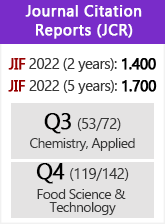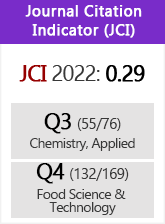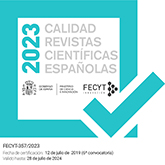Commercial opportunities for olive oil from Castilla- La Mancha (Spain)
DOI:
https://doi.org/10.3989/gya.053409Keywords:
Conjoint Analysis, Consumer behavior, Food Marketing, Segmentation, Willingness to payAbstract
Quality olive oils produced in Castilla-La Mancha are difficult to commercialize in the national and international markets due to increasing competition among olive oil companies and their easy replacement by other cheaper seed oils. To increase competitiveness, consumer preference must be discovered. Therefore, 420 surveys were made on vegetable oil consumers in the Madrid metropolitan area in December, 2006. It was detected by means of the conjoint analysis technique, simulation and analysis logit that the type of vegetable oil preferred by consumers was the extra virgin olive oil. Some market opportunities seem to exist for the organic olive oil produced in Castilla-La Mancha and consumers’ maximum willingness to pay for organic olive oil with regard to the conventional oil is 13.1%. In addition to this, and with the aim of contributing to the commercialization of the organic olive oil produced in Castilla-La Mancha, the Regional Government of Castilla-La Mancha (Spain) could promote the creation of the Protected Geographical Indication of Castilla-La Mancha Organic Olive Oils.
Downloads
References
Aguirre MS, Aldamiz-Echevarria C, Charterina J, Vicente A. 2003. El consumidor ecológico. Un modelo de comportamiento a partir de la recopilación y análisis de la evidencia empírica. Distribución y Consumo 67, 41- 54.
Armstrong G, Farley H, Gray J, Durkin M. 2005. Marketing health-enhancing foods: implications from the dairy sector. Marketing Intelligence & Planning 23, 705- 719. doi:10.1108/02634500510630221
Bernabéu R, Olmeda M. 2007. El consumidor de alimentos ecológicos en Castilla-La Mancha. Ediciones de la Universidad de Castilla-La Mancha. Cuenca.
Bishop RC, Heberlein TA. 1979. Measuring values of Extra- Market goods: Are Indirect Measures Biased? Am. J. of Agric. Economics 61, 926-930. doi:10.2307/3180348
Braña T, Ferraces M J, Varela J. 1995. Diseño factorial incompleto. IV Simposium de Metodología de las Ciencias del Comportamiento. Murcia.
Bretton-Clark. 1986. Conjoint Designer and Conjoint Analyzer version 2.0. Bretton-Clark
Brugarolas M, Rivera LM. 2001. Comportamiento del consumidor valenciano ante los productos ecológicos e integrados. Rev. de Estudios Agrosociales y Pesqueros 192, 105-121.
Chang HS, Zepeda L. 2004. Demand for organic food: focus group discussions in Armidale.NSW.Working Paper Series in Agricultural and Resource Economics, 6. [En línea]: http://www.une.edu.au/febl/EconStud/wps.htm (Consulta de 15 de febrero de 2006).
De Boer J, Helms M, Aiking H. 2006. Protein consumption and sustainability: Diet diversity in EU-15. Ecological Economics 59, 267–274. doi:10.1016/j.ecolecon.2005.10.011
Gil JM, Soler F, Díez I, Sánchez M, Sanjuán AI, Ben Cabía M, Gracia A. 2000. Potencial de mercado de los productos ecológicos en Aragón. Ed. Diputación General de Aragón. Zaragoza.
Green PE, Rao VR. 1971. Conjoint Measurement from Quantifying Judgemental Data. J. of Marketing Research 8, 355-363. doi:10.2307/3149575
Hair JF, Anderson RE, Tatham RL, Black WC. 1999. Análisis multivariante. Prentice-Hall. Madrid.
Halbrendt CK, Wirth EF, Vaughn GF. 1991. Conjoint analysis of the Mid-Atlantic food-fish market for farmraised hybrid stripted bass. Southtern J. of Agric. Economics, July, 155-163.
Hanemann WM. 1984. Welfare Evaluation in Contingent Valuation Experiments with Discrete Response. Am. J. of Agric. Economics 66, 332-341. doi:10.2307/1240800
Instituto de Estadística de la Comunidad de Madrid (IECM) 2006.Estructura y evolución de la población.
Junta de Comunidades de Castilla-La Mancha (JCCM) 2008. Cifras del sector agrario. [En línea]: http://www.jccm.es/agricul/paginas/agricultura-ganaderia/cifras/aceite.htm (Consulta realizada el 20 de abril de 2009).
Kirk J. 1982. Experimental design: Procedures for the behavioural sciences. Brooks-Cole Co. 2nd ed. Monterrey, CA.
Mann S. 2003. Why organic food in Germany is a merit good. Food Policy 28, 459-469. doi:10.1016/S0306-9192(03)00057-5
Ministerio de Agricultura, Pesca y Alimentación (MAPA) 2007. La alimentación en España 2006. [En línea]: http://www.mapa.es/alimentacion/pags/consumo/2006/panel-06.pdf (Consulta realizada el 19 de marzo de 2007).
Ministerio de Agricultura, Pesca y Alimentación (MAPA) 2008. Estadísticas 2007 Agricultura Ecológica. España. [En línea]: http://www.mapa.es/alimentacion/pags/ecologica/pdf/2007.pdf (Consulta realizada el 5 de febrero de 2009).
Noomene R. 2005. Actitudes del consumidor español ante los alimentos modificados genéticamente (OGM). Tesis Máster en Ciencias (no publicada). Instituto Agronómico Mediterráneo. Zaragoza.
Rivera LM. 1989. Marketing para las Pymes agrarias y alimentarias. MAPA-AEDOS. Madrid
Sanjuán AI, Sánchez M, Gil JM, Gracia A, Soler F. 2003. Brakes to organic market enlargement in Spain: consumers’ and retailers’ attitudes and willingness to pay. Int. J. Consumer Studies 27, 134-144. doi:10.1046/j.1470-6431.2003.00295.x
Sanz, F.J.; Rodríguez-Zúñiga, M. y Mili, S. (1997). Estrategias competitivas ante la globalización de los intercambios comerciales: la cadena del aceite de oliva en España. Instituto de Economía y Geografía (C.S.I.C.). Madrid.
SPSS Inc. 2008. SPSS Categories. Version 15.0. Chicago.
Steenkamp JB. 1987. Conjoint measurement in ham quality evaluation. J. of Agric. Economics 38, 473-480. doi:10.1111/j.1477-9552.1987.tb01065.x
Downloads
Published
How to Cite
Issue
Section
License
Copyright (c) 2009 Consejo Superior de Investigaciones Científicas (CSIC)

This work is licensed under a Creative Commons Attribution 4.0 International License.
© CSIC. Manuscripts published in both the printed and online versions of this Journal are the property of Consejo Superior de Investigaciones Científicas, and quoting this source is a requirement for any partial or full reproduction.All contents of this electronic edition, except where otherwise noted, are distributed under a “Creative Commons Attribution 4.0 International” (CC BY 4.0) License. You may read here the basic information and the legal text of the license. The indication of the CC BY 4.0 License must be expressly stated in this way when necessary.
Self-archiving in repositories, personal webpages or similar, of any version other than the published by the Editor, is not allowed.
















